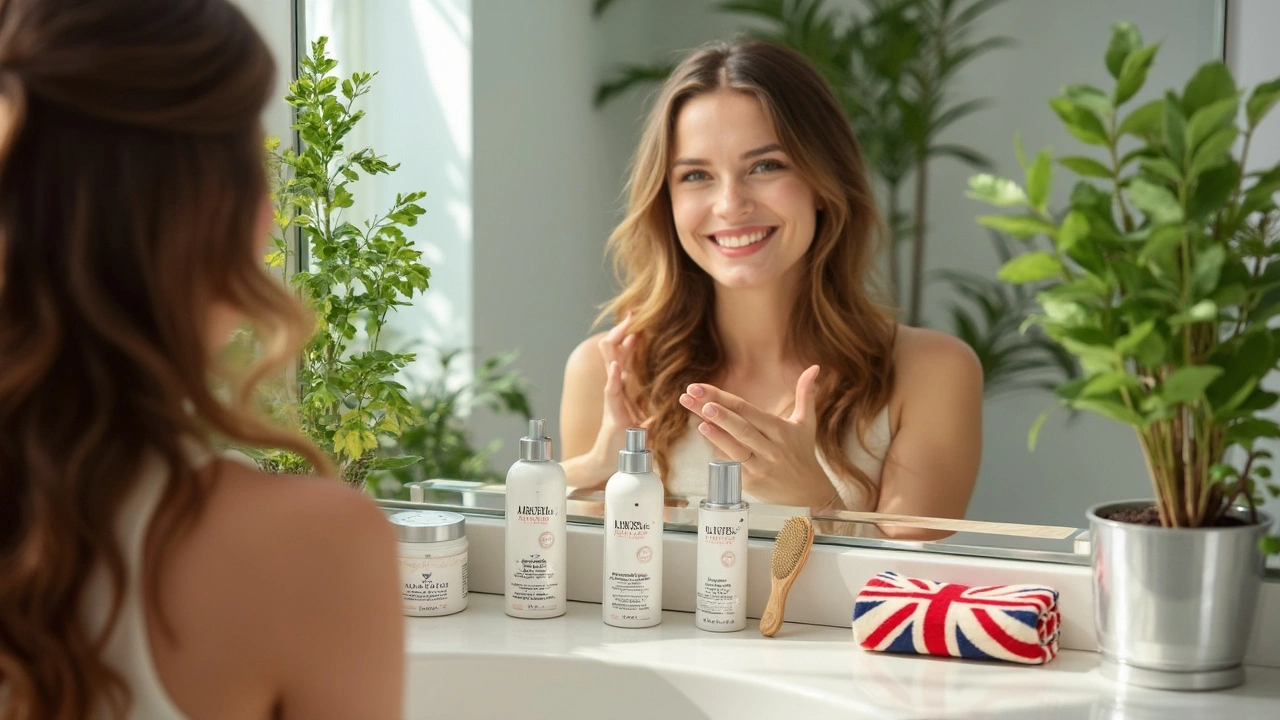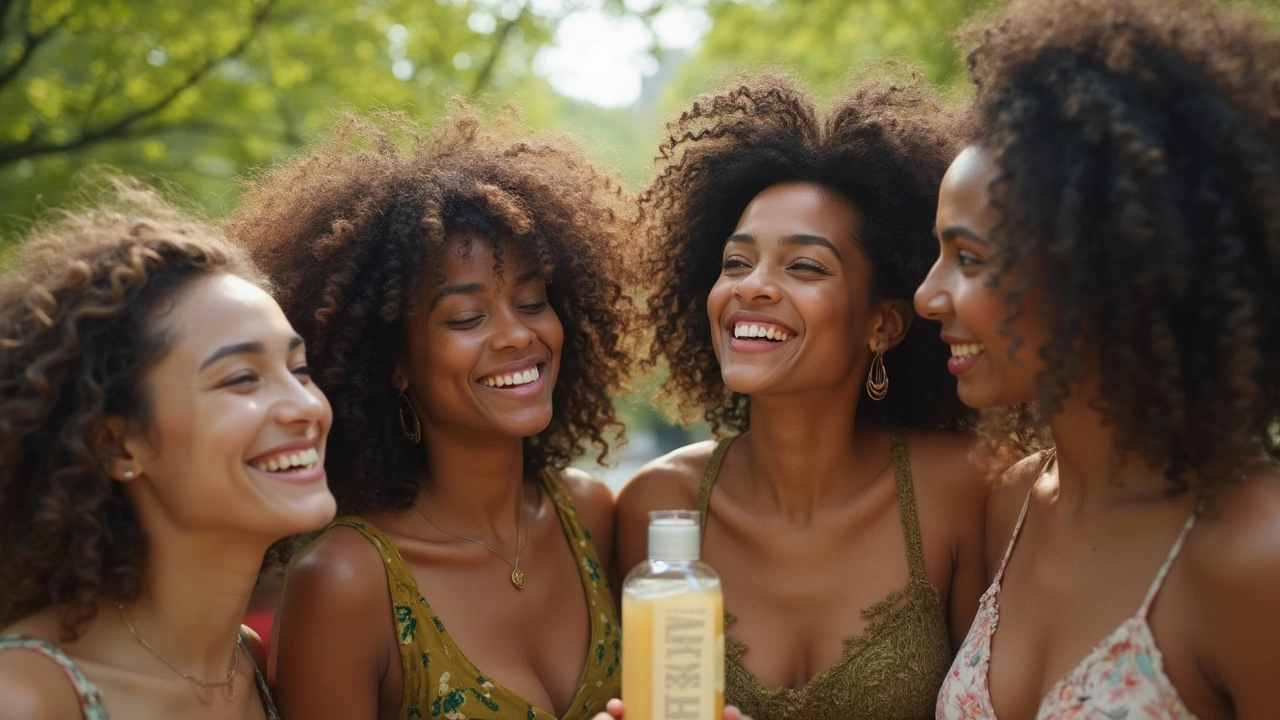Allantoin for Hair: Surprising Benefits & Best Hair Care Products

May, 8 2025
Walk down any aisle packed with shampoos, masks, and scalp drops and you’ll spot a once-quiet ingredient making a lot of noise: allantoin. Didn’t expect to see a skincare favorite making waves in hair care, did you? Heard whispers about its calming, healing magic for sensitive scalps or stressed strands? There’s more to it than hype. Allantoin really does something, and if you’ve struggled with flaky roots, random itchiness, or brittle ends, its gentle power is worth a closer look. If your mind is whirring with questions (Is it safe? Synthetic or natural? Does it actually help hair grow?), you’re in good company. Let’s pull back the curtain on what allantoin is doing in your conditioner and how it might just give your hair a fighting chance at its best day—every day.
Why Allantoin Deserves Attention in Hair Care
First things first: allantoin isn’t new. Plants like comfrey and chamomile have had it stashed away in their leaves and roots for ages, quietly soothing cuts and scrapes. But only recently have hair gurus and cosmetic chemists realized how much it can help with hair and scalp issues that really get under your skin. Imagine something ridiculously gentle, yet strong enough to jumpstart dead skin cell turnover, soothe irritation, and add a noticeable boost of moisture. That’s allantoin’s resume—long before it graced the ingredient lists of your favorite hydrating hair masks.
Now, most of the allantoin used in cosmetics gets whipped up in a lab. That’s actually a good thing: lab-made allantoin keeps consistency and purity sky-high, which matters a lot when you’re using it near your roots. You don’t want random plant gunk or allergies sneaking in. Proven safe even at concentrations up to 2% in leave-on hair products, allantoin is a go-to for sensitive types who can’t handle heavy silicones, harsh rubs, or intense fragrances. If you’re after a scalp that doesn’t rebel after every wash, this is your guy.
You don’t notice a healthy scalp until it turns against you—itching, flaking, or refusing to sprout new hair. Allantoin helps by moisturizing the top layer of skin (that’s your scalp), making it harder for those itchy flakes to form. It does this by increasing the water content of cells, encouraging even stubborn, keratin-packed cells to soften and shed gently. Dermatology clinics have leaned on it for years to treat mild irritation, chronic eczema, and even sunburns where other creams fall short. No surprise that hair care brands have started sneaking it into everything from scalp serums to detangling sprays.
Want numbers? According to a 2022 study from the International Journal of Cosmetic Science, users who switched to an allantoin-infused scalp mask for four weeks saw a 35% reduction in scalp flakiness and a significant decrease in redness and itching. Nothing fancy—just real, visible comfort. If you’re all about the science, here’s a quick comparison table that lays out allantoin’s strength versus two common hair care ingredients:
| Ingredient | Main Action | Common Side Effect | Suitability |
|---|---|---|---|
| Allantoin | Moisturizes, soothes, speeds cell turnover | Rare (virtually none) | All scalp & hair types, sensitive skin friendly |
| Salicylic Acid | Removes flakes, chemical exfoliant | Dryness, irritation with overuse | Oily, dandruff-prone scalp (not sensitive) |
| Ketoconazole | Antifungal, reduces dandruff | Irritation, dryness if used long-term | Severe dandruff, medical needs |
Notice how allantoin plays it safe while still getting results? That’s why it suits anyone—from kids to adults—who wants less drama when washing or styling hair.

Allantoin’s Benefits for Hair and Scalp: Facts and Real-World Perks
The best thing about allantoin for hair is how it covers more than just one issue. People rave about it because it multitasks like crazy, and the science actually lines up with those good vibes. If your scalp acts up every winter, or if your hair feels like straw after coloring, you’ll want to hear what allantoin’s really doing under the hood.
1. Soothes & Calms the Scalp
Ever scratched your head in the middle of a stressful day, only to realize your scalp feels sore? Allantoin steps in as an anti-irritant. A 2023 clinical review found that even at low doses, allantoin tamped down markers of scalp inflammation by more than 50%, beating out common natural oils.
2. Boosts Hydration Without Weight
Hair needs moisture, but not every moisturizer feels good. Allantoin is water-loving and feather-light. It actually acts as a humectant, dragging water into the skin cells on your scalp without leaving behind a heavy, greasy feeling. For fine-haired folks who run from oily products, this is gold.
3. Keeps Dandruff in Check
Dandruff isn’t just about flakes—it’s about the embarrassing fallout of dry, dying skin cells. Allantoin breaks up tough, hard-to-remove patches so they come off gently, not in clumps. Several big anti-dandruff lines now add allantoin to boost comfort alongside classic dandruff fighters.
4. Speeds Up Healing Process
If you scratch too hard or spend too long in the sun, your scalp can feel raw. This stuff is used in first-aid creams for a reason: it actually speeds cell repair. That means less downtime and quicker bounce-back from irritation or the odd sunburn on a part line.
5. Improves Hair Texture and Shine
While it won’t magically grow new hair overnight, allantoin helps the outer layer of the hair shaft stay smooth and soft, which means less frizz and more shine. Several stylists swear by allantoin-packed serums for making parched ends look livelier—especially after heat styling or dye jobs.
6. Gentle Enough for Daily Use
Surprised? Lots of scalp-focused ingredients (think sulfur or zinc) can’t be used every single day without drying you out. But allantoin is so calming, you can lather up with your favorite mask, rinse-out, or leave-in product daily without worrying about build-up or irritation.
Now, let’s talk about some down-to-earth, real-life tips for making allantoin work even better for your hair journey:
- Don’t overdo it. Even the best ingredient can’t fix unhealthy habits (like skipping conditioner or using scorching water).
- If you’re using other scalp treatments—like minoxidil or medicated dandruff shampoos—pairing those with an allantoin-rich serum can calm side effects and help your scalp recover faster.
- Color-treated hair? Allantoin’s mild, non-stripping powers mean you don’t have to worry about fading your color.
- Pro tip from stylists: apply an allantoin scalp leave-in at night to get maximum soothing benefits as you sleep. Rinse out in the morning for soft, comfortable roots.
- Scan ingredient labels. Allantoin might show up under different names (sometimes listed as glyoxyldiureide), but most decent brands shout it out up front.
These perks have landed allantoin in more high-end—and even budget-friendly—hair care lines lately. Check out a solid scalp serum or soothing detangler and you’ll probably spot it near the top of the ingredients list. That’s a sign they trust it to deliver.

Best Allantoin-Infused Hair Products and How to Get the Most Out of Them
You’re sold on the benefits. But how do you spot a good allantoin product—and even more, get it to actually work for your hair type? Here’s where it gets real: not every product splattered with “soothing” on the label makes a difference. The formula, place in your routine, even your water temperature all matter. Let’s go step-by-step.
Finding Allantoin Standouts
First, stick to brands that disclose concentrations or talk openly about their active ingredients. Here’s a quick table with a handful of genuinely effective products for different needs:
| Product | Type | Best For | Key Benefit |
|---|---|---|---|
| Briogeo Scalp Revival Charcoal + Coconut Oil Micro-Exfoliating Shampoo | Shampoo | Flaky, irritated scalp | Gently scrubs, soothes, restores balance |
| Paula’s Choice Allantoin & Panthenol Detangling Mist | Spray | Dry, hard-to-manage ends | Hydrates, prevents breakage |
| L’Oreal EverPure Sulfate-Free Moisture Shampoo | Shampoo | Color-treated hair | Softens, protects color, prevents dryness |
| Eucerin DermoCapillaire Calming Urea Scalp Treatment | Serum | Sensitive, itchy scalp | Rapid relief for irritation, hydration boost |
| Amika Reset Pink Charcoal Scalp Cleansing Oil | Treatment Oil | Oily, overloaded scalp | Clears buildup, soothes, refreshes |
Most of these play well with other actives. For example, if you see niacinamide or panthenol (vitamin B5) paired with allantoin, that’s a bonus—both support healing and boost moisture levels. Caffeine and zinc are also common companions in scalp treatments, giving a double whammy for fine hair or early thinning.
How to Use Allantoin Products Wisely
- Start simple: Don’t throw a dozen new products at your scalp all at once. Start with one allantoin-infused shampoo or serum and see how your roots and ends respond.
- Follow the directions: Sounds simple, but so many people rinse too fast or leave treatments on too long. Let scalp masks sit for the recommended time for best results.
- Pair smartly: Use a clarifying shampoo once a week to keep buildup at bay and let allantoin absorb deeper the rest of the week.
- Spot check: If you’re prone to allergies, dab a new product behind your ear and wait 24 hours. Reactions are extremely rare, but better safe than sorry.
- Keep it consistent: The best hair changes happen with regular, gentle routines, not sudden overhauls. Give your scalp and hair a few weeks to adjust before switching things up.
Notice the difference after about 4-6 weeks: less itch, fewer flakes, and genuinely softer hair. If you’re chasing longer, healthier growth, pairing allantoin with a scalp massage (just fingertips, circular motion, 2-3 minutes daily) can improve circulation and put those soothing powers to work even faster.
If you color or bleach your hair, responsive ingredients like allantoin help you skip the dreaded "crunchy" ends, even right after processing. And for anyone plagued by split ends or regular breakage, a post-wash mist with allantoin is a swap you likely won’t regret. It’s gentle enough for leave-in use, yet strong enough to smooth down frizz in a hurry.
Still skeptical? One recent survey by a major beauty retailer found that 89% of customers with a history of scalp sensitivity rated their allantoin hair products as “noticeably more comfortable,” with many saying they needed less styling product as their hair returned to a naturally healthier texture. Pop on a leave-in before hitting the gym or heading into a dry winter day, and you’ll feel the calm-factor work overtime. You won’t scroll endlessly through labels anymore—once you’ve tried allantoin for hair, you will catch yourself looking for it in every new product because it just makes good hair days happen more often.
